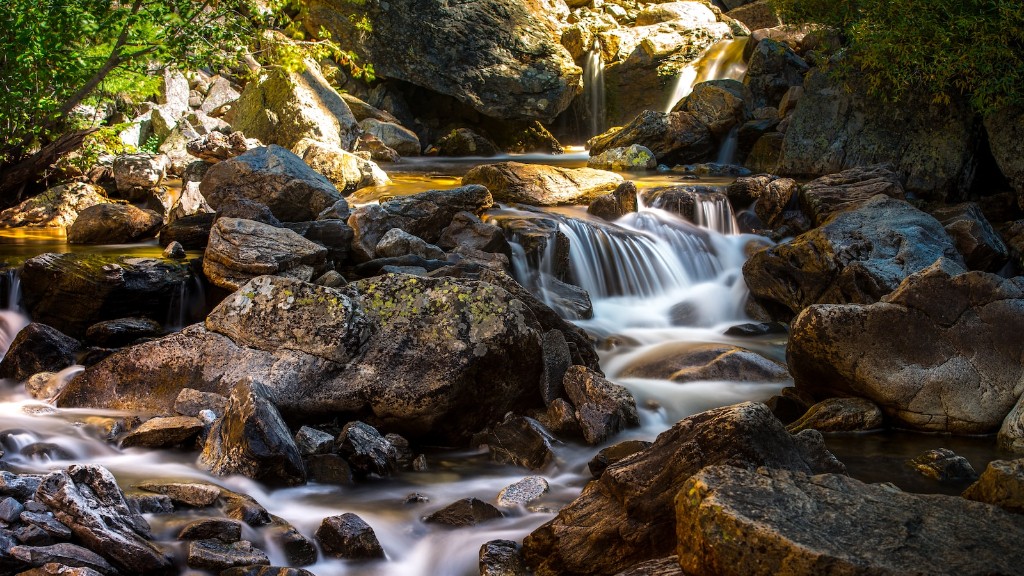Impact on Water Supply and Quality
The Mississippi River is a crucial natural resource for the local environment, providing both water supply and water quality for nearby regions. Consequently, changes in the levels of the river have a direct and substantial impact on the availability of water resources and the quality of surrounding areas. Low levels of the river can cause difficulties for those who depend on the Mississippi for their water sources and for the wildlife that makes its home in and around the river.
According to the U.S. Geological Survey, the Mississippi River is expected to be much lower – in comparison to the last several decades– over the next several years. The current drought conditions have caused levels to drop to historical lows. For instance, the river dropped below two feet at Memphis, Tennessee in November of 2020, a new low since the measurements were taken. This reduction in the Mississippi’s water levels has had dire consequences in the area, particularly for farmers and other industries that rely on the river.
The water drawn from the Mississippi is also used in municipal water systems. With reduced levels, the water available is not only lower, but also of lower quality due to salinity. This poses a health issue for many of the people downstream who rely on the Mississippi to provide fresh, potable water. In response, many cities have increased their efforts to reduce the amount of water drawn from the river to prevent water contamination.
According to experts, the current lower levels of the Mississippi are part of a climate shift that will require adapted strategies from regional policymakers. The strategies need to address issues such as economic pressure, water shortages, and consequent health risks. In particular, action needs to be taken to ensure that water quality is as high as possible and that water sources do not become depleted. It is clear that the area is in need of new solutions and adaptation policies for the long-term health of the region.
Environmental Impacts
The Mississippi is an important migratory path for many species of species of fish, birds, and mammals. Low water levels disrupt the natural cycles of these creatures and can have long-term negative effects on their habitats. For example, without sufficient water, some fish species will be unable to spawn, or may become trapped in stagnant pools. This can lead to a decrease in the overall number and diversity of the species along the entire river.
The plants and flora along the river are also affected by the droughts and declining water levels. Low levels cause desiccation in plants and limit photosynthesis, the process by which plants create food. This has been observed in parts of the Mississippi Delta, leading to fragmentation and changes in vegetation. Low levels also threaten the aquatic ecosystem by releasing toxic materials from the sediment into the waters, endangering the species that call it home.
The decrease in water levels affects more than just aquatic life. Many of the river’s birds feed directly from the river, and many of the stored wetlands at its mouth. Low levels not only jeopardize the birds’ food source, but also the habitats the birds nest in. Furthermore, waterfowl depend on the river water itself to cool off during high summer temperatures. Reduced water levels make this cooling process more difficult and can reduce the overall population of the species in the area.
Finally, lower water levels pose a significant risk to human health. The reduced water flow can lead to increased heat and humidity, reducing air quality and leading to increased levels of air pollution. This can cause health issues such as respiratory infections, further exacerbating the health risks in the area.
Socio-Economic Implications
The reduction of the Mississippi can have far reaching effects on nearby communities and industries, such as farmers and local businesses. For example, farmers rely heavily on the Mississippi for irrigation, for waste disposal, and for the transport of goods. As the river recedes, farmers will struggle to find alternative ways to irrigate their crops and transport their goods. This may lead to decreased crop yields, and could have a negative economic impact on local communities.
The Mississippi is also an important source of recreation for many people in the area. With reduced water levels, many of the recreational activities people rely on – such as swimming, fishing, or kayaking – may become dangerous or impossible. This can cause a decrease in tourist activity and harm the local economy. The river is also an important source of pleasure and leisure, and reduced levels detract from these activities.
The decreasing levels of the Mississippi has caused strain on communities and businesses and will likely lead to changes in the way people in and around the region interact with the river. The flow of the Mississippi is essential for the region and its economy, and without it, there is a real possibility of long-term harm to the environment and to the local communities.
Reversing the Effects
The declining levels of the Mississippi is a consequence of climate change, but that does not mean that it is irreversible. There are steps that can be taken by both local and federal governments to help mitigate the effects of the drought, and to help reduce the damage to the environment and economy.
One potential solution is to reduce pollution to the river and its ecosystem, which can help promote the health of the biological life in the area. Local governments can work to enact stricter regulations on factories that pollute the river and its surroundings. Additionally, initiatives such as tree-planting can also help increase the absorption of water and help reduce water levels.
The federal government can also work to increase funding for research into drought-resistant agriculture and water conservation efforts. This would help facilitate adaptation to water scarcity, promote efficient water use and ultimately help reduce the damage caused by low levels of the Mississippi.
Finally, local organizations such as universities, environmental groups, and industry leaders can work together to come up with innovative ways to mitigate the effects of the river’s water levels. By working together these entities can create new plans and strategies to help reduce the impact of drought and improve the water quality of the Mississippi.
Adapting to Lower Water Levels
Given the current situation, it is clear that individuals and organizations will need to adapt to the lower than usual water levels of the Mississippi. Making the necessary changes will require creativity and determination, but it can be done.
The most immediate action is for individuals and businesses to conserve water. Simple changes such as reducing water usage for showers, limiting lawn watering, and conserving energy can help reduce the demand on resources and help sustain the local water supply.
Institutions and organizations should look for alternative sources of water, such as rainwater harvesting and wastewater reuse. Additionally, organizations should look for long-term solutions to protect water supplies and to help reduce water pollution. This includes creating regulatory reforms to restrict how water is used, and introducing taxes and charges to discourage wasteful practices.
The final step is to educate others of the importance of the river and the need to conserve the water that is available. This can be achieved through campaigns and initiatives aimed at promoting sustainable practices and raising awareness of the importance of water conservation.
Conclusion
The lower than usual water levels of the Mississippi River have caused considerable disruption to its ecosystem, economy and local communities. This disruption will have long-term repercussions, and requires thoughtful action from local, state and federal authorities to mitigate the effects and find solutions that work for all concerned. However, individuals and organizations can also do their part to reduce the impact by conserving water, looking for alternative sources, and educating the public on the importance of water conservation.





